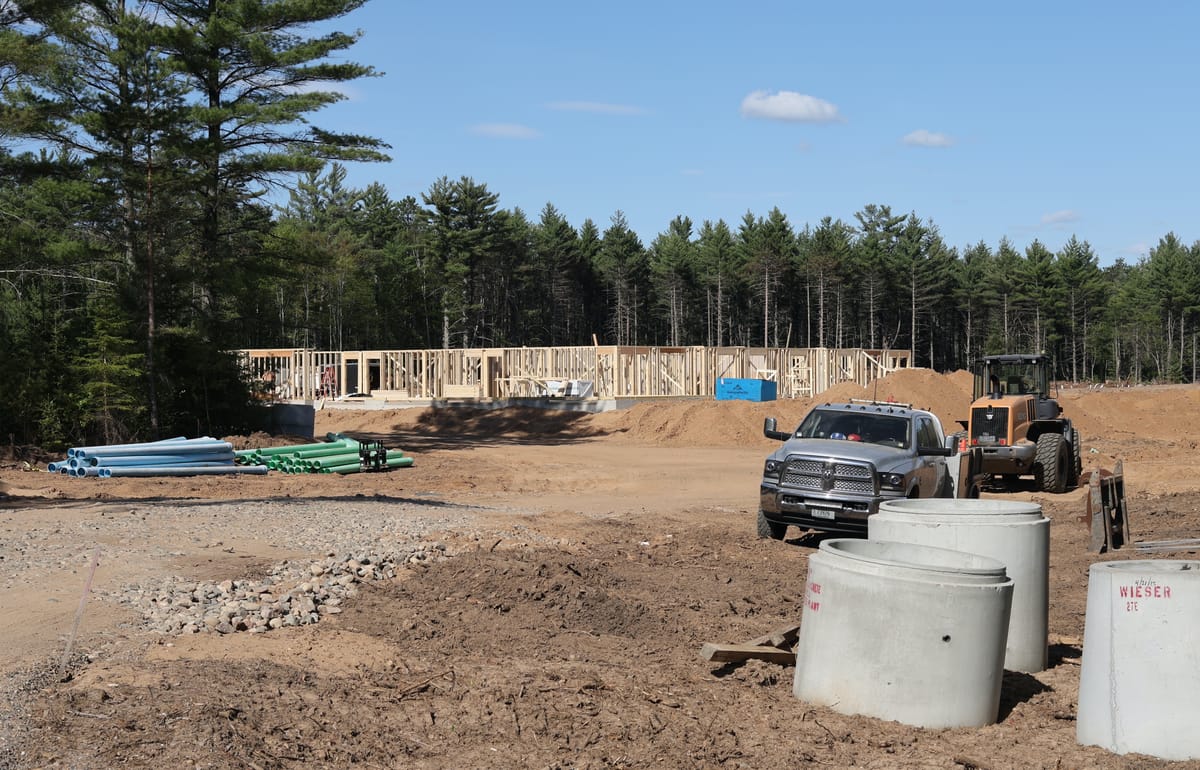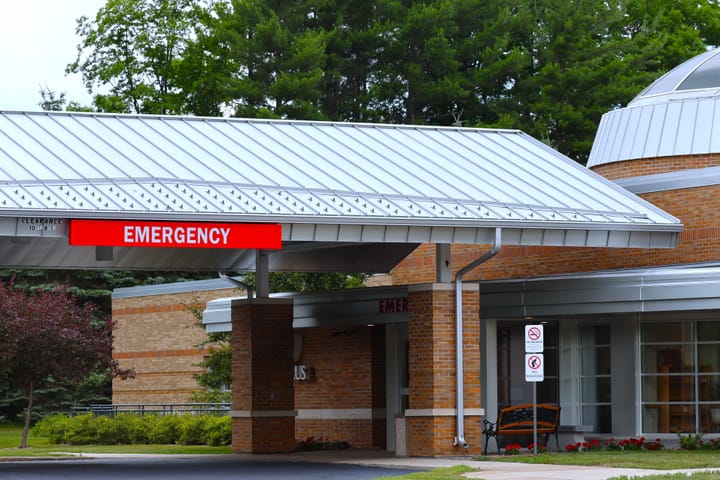New Apartments Could Mitigate Some Housing Shortage Woes

"The housing shortage is a multifaceted issue." That's putting it mildly, but Eagle River City Administrator Robin Ginner is hopeful the new apartment complex being built will help to alleviate at least some of the shortage seen in the area in recent years.
Premier Eagle River, LLC. is currently building phase one of a two-phased complex that will bring 84 total units to town. The buildings are located at the northeast corner of US Highway 45/East Pine Street, Wall Street, and State Highway 70 East.
While one apartment complex might not seem like enough to save an area that has been brutalized by rising housing costs and lack of availability for years, it's at least a step in the right direction. Housing shortages can have negative impacts on the workforce, and can be especially damaging when the people needed to staff places like schools, hospitals, child care, and the food, beverage and entertainment industry are not able to afford housing.
"With investors quickly purchasing homes to convert into short-term rentals and housing prices soaring in recent years, the addition of 84 new units will be a much-needed expansion of the city’s housing inventory," Ginner said. "One hopeful outcome is that these apartments will appeal to empty-nesters looking to downsize, enabling them to sell their single-family homes to younger families. This could help refresh the housing market and create more opportunities for homeownership."
Ginner recognizes that is speculative, but said she and other city officials are optimistic this addition will contribute to a healthier housing cycle. She was careful to note that these new apartments are neither age-restricted, nor are they considered "affordable housing" in the economic development sense. She also said they will be leased at "market rate," but is unaware of what the rent may be on the new units.
Lack of Affordable Housing Brings Unique Challenges
Housing shortages can contribute to a number of other problems for an area, such as affecting staffing for local businesses and the ability to draw new talent to the area, just to name a few. But bringing affordable housing to those raising families on limited incomes can pose its own set of obstacles.
According to Ginner, attracting developers to build true affordable or “workforce” housing is a significant challenge. "Workforce housing refers to reasonably priced units for local employees — not subsidized or Section 8 housing, but rentals within reach for those working in our shops, restaurants, taverns, and attractions. These developments typically require public financial support to offset high construction costs and keep rents manageable."
She explained that funding support for affordable housing projects often comes through tax increment financing (TIF) programs.
"While the city currently has two TIF districts, the expenditure periods for both have expired, leaving us unable to offer financial incentives to attract such development. This presents a significant challenge, as the city is not in the business of building housing. Without an active TIF, our remaining tools are limited to guiding developers toward external grant opportunities through agencies like the USDA or WHEDA — making it even harder to support the creation of workforce housing."
Ginner said that the city did put together an Affordable Housing Taskforce, but the above mentioned lack of options limited it from being able to enact any movement on attracting developers.
"This lack of affordable housing directly impacts our local workforce," Ginner explained. "In the past, the school, hospital and police department (and I’m sure other businesses) have recruited potential employees just for them to be unable to find or afford a place to live, therefore turning the job offer down. As demand to live in our desirable community grows, so does the cost of housing — pricing out many who work here."
Ginner went on to say that, without accessible housing, businesses struggle to recruit and retain staff, leading to reduced hours or even closures. "It’s a paradox: the qualities that make our community attractive also make it increasingly unaffordable for the people who help it thrive."
Ready for Growth
When it comes to future expansion, Ginner said that at least at a utilities level, the water and sewer system are adequate to support a substantial increase in the size and population of the city. Planning for that type of expansion was in the plans when the city reconfigured its utilities a few years ago. Ginner acknowledged that many roads do need to be addressed, and they are working their way through a list of them.
"We do try to do one major project every year – this year it’s Silver Lake Road," she said. That project is expected to begin in mid to late August.
But beyond utilities planning and general maintenance and upkeep, Ginner said the direction the city will take in the future is something that is "yet to be clarified." When the current comprehensive plan was developed in 2013 — before Ginner's time as city administrator — that vision was not suitably defined.
"It’s time for that comprehensive plan to be re-written, and my hope is when it is, a better definition of our vision for development and the future is made clear."
Other challenges the city of Eagle River faces include that it's essentially landlocked by the surrounding town of Lincoln, which limits the space for developments, and the rising building costs have forced some interested builders to put projects on pause.
"(S.C.) Swiderski (LLC) has had plans for another 40-plus unit development on the corner of Ohio and Red Fox to supplement their Mill Street Estates complex, but it’s been on hold the past few years because of construction costs. But if/when they move forward, that will be another 40-plus (units) on top of the 86 as part of the Pine Haven development. For a city of 1600 or so people, 120 housing units would be an incredible increase in our housing inventory," Ginner said.
But in the meantime, the task at hand is the apartment complex. Framing is being done now on the first phase, which consists of three buildings with 12 units in each at an estimated cost of $5.1 million. The first round of rentals should be available by late summer. Phase two will consist of four buildings with 12 units in each, at an estimated cost of $7.8 million. No start date for phase two has been set yet.



